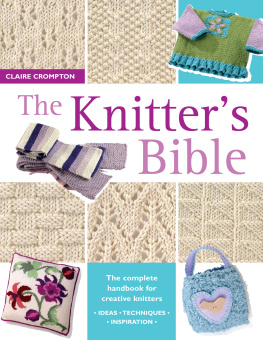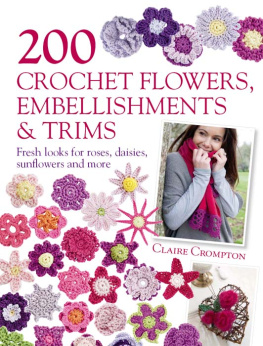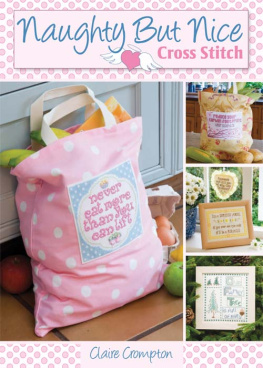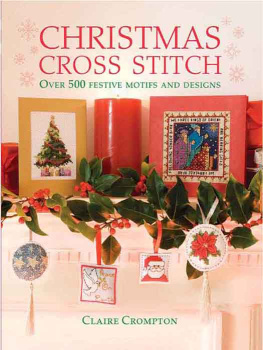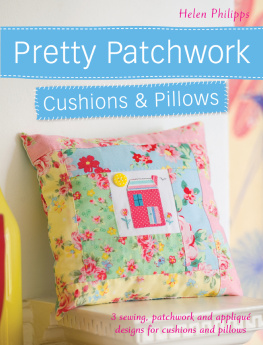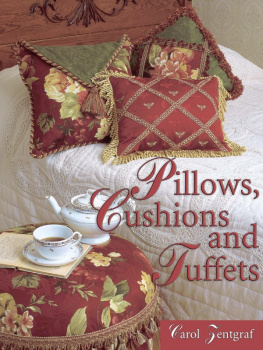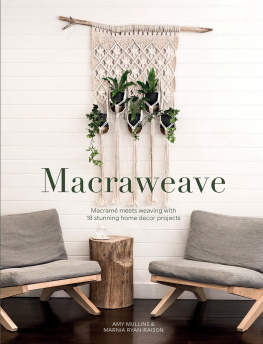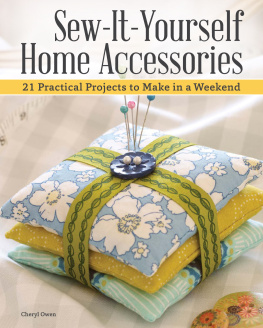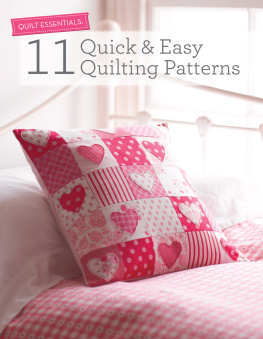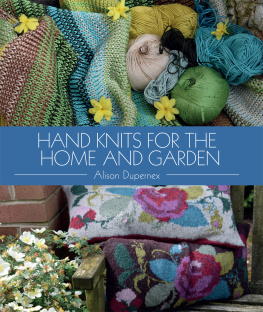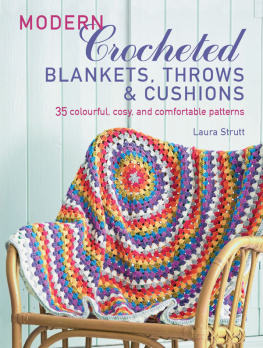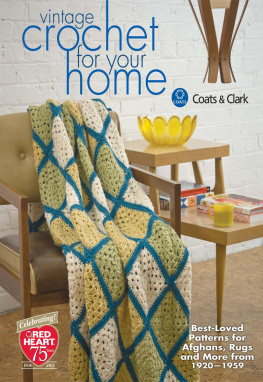Contents
Guide
The
Knitters
Bible
CLAIRE CROMPTON

CONTENTS
Getting Started
This section contains all the techniques you need to start knitting, beginning with how to hold the needles and yarn, how to cast on and work the knit stitch, and how to bind (cast) off. These basic techniques will then allow you to complete your first project. Learn how to purl, the other basic stitch, and combine it with the knit stitch to produce stockinette (stocking) stitch and ribs. More projects follow, using the techniques just learnt. There is useful information on choosing and using different yarns, and an explanation of the different needles and equipment you will need to begin knitting confidently.
Introduction
This book will take you through the basic techniques that you need to begin knitting, such as casting on, and knit and purl stitches. It encourages you to try new techniques including cables and fair isle knitting. There is a wide range of projects for you and your home, ranging from simple ones to more challenging designs as your confidence and skills grow.
How to use this book
The book has been divided into colour coded sections to help you find the information you need quickly and easily. Each new technique is explained with clear diagrams, photographs and step-by-step instructions.
Getting Started is colour coded purple and teaches you the basic techniques you need to begin knitting straight away. It offers invaluable information about yarns and choosing the correct needles for your work. At the end of this section is a page of useful hints and tips to improve your knitting and a list of the abbreviations that are used throughout this book, each clearly explained.
Creative Options pages are coded blue, and introduce more techniques to expand your range of knitted fabrics, such as lace knitting, cables and colour knitting. Circular knitting is also explained.
Exploring Choices is colour coded green and features many exciting techniques to encourage you to experiment and discover the wide variety of fabrics that can be knitted. Beads, embroidery and looped knitting decorate the surface whilst mitred squares and entrelac illustrate the creative use of shapes. This section also includes information on working from knitting patterns, how to alter patterns to fit and how to adapt patterns with new stitches.
Throughout these three sections, there are Knit Perfect boxes, which focus on the important points of each technique and give hints and tips to improve your knitting.
The Stitch Library pages are coded turquoise and include a wide range of over 100 stitches that you can use in the projects or for your own designs.
Throughout the book, the techniques are illustrated by projects, beginning with a simple garter stitch scarf that can be knitted with three basic techniques. Other projects include a cable throw, and bootees, sweater and blanket for baby. The smaller items like gift bags and scented sachets are quick and easy to knit and will encourage you to try new techniques.
Measurements are given in imperial with metric conversions in brackets. Use either imperial or metric when working, do not combine them since in many cases they are not a direct conversion.
Two ways of holding the needles and knitting are explained: the English method and Continental method. To avoid confusion, throughout this book the diagrams show the English method of holding the needles. Knitters who prefer the Continental method can easily use the diagrams since the position of the needles and the working yarn around the needles are the same for both methods.
Whether you are a complete novice wanting to start knitting, or an experienced knitter searching for fresh ideas and inspirations, this is the essential handbook that will always be at your side.
INTRODUCING YARNS
Fibres
Yarns are spun from natural or synthetic fibres. Natural fibres include wool, silk, linen, cotton, cashmere and alpaca. Synthetic fibres include polyester, acrylic, viscose, rayon and nylon. Yarn can also be a mixture of each, for example, wool and acrylic, or wool and cotton.
The following list describes the most common fibres used in knitting yarns:
NATURAL FIBRES
Alpaca hair from the alpaca (llama)
Angora hair from the angora rabbit
Cashmere hair from the cashmere goat
Cotton plant fibre, from the boll of the cotton plant
Lambswool sheeps first shearing, usually the softest
Linen plant fibre, from the stem of the flax plant
Merino wool from the fleece of the merino sheep
Mohair from the angora goat, the softer and finer kid mohair is from the kid goat
Shetland wool traditionally from Shetland sheep
Silk continuous filament secreted by the silkworm larva
Wool from the fleece of a sheep
SYNTHETIC FIBRES
Acetate, rayon and viscose chemical treatment of cellulose fibres from wood pulp
Acrylic, polyester and nylon made from petro-chemicals, nylon is the strongest textile fibre, elastane is an elastic fibre
PLY OR THICKNESS
A ply is a single twisted strand and, as a general rule, the more plies that are twisted together, the thicker the yarn but, confusingly, the plies from different manufacturers can be different thicknesses themselves. A tightly spun ply will be thinner than a loosely spun one. In order of thickness they are:
1 ply which is used for gossamer lace knitting like traditional Shetland shawls
Baby and fingering (UK 2ply or 3ply)
Sport (UK 4ply)
Worsted (UK DK double knitting) the most widely used weight which is suitable for most garments without being too bulky for indoor wear.
Fisherman or medium weight (UK aran)
Bulky (UK chunky)
Super bulky (UK super chunky) and Big yarns are even thicker

Texture
Most yarns are plain simply plies twisted together but there are other yarns called novelty or specialist yarns.
Chenille has a core of strong plies spun together to trap the short velvet pile threads.
Boucle has two plies spun together at different speeds so one bunches up around the other creating a towelling look when knitted up.
Slub yarns alternate between thick and thin creating a very textured fabric.
Ribbon yarns are exactly what they sound like; knitted up they form a loose fabric with plenty of drape.
Mohair or angora yarns have been brushed to raise the hairs of the fibre and make a soft fluffy fabric.
Fun fur yarns with short or long piles knit up for an extra furry garment.
Fleece yarns knit up to make a soft all-over pile.
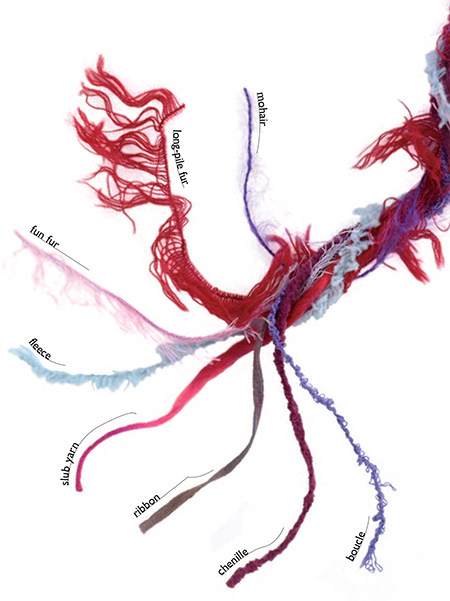
Special features
Due their different characteristics, some yarns are more suitable for certain uses than others. A childs garment that needs frequent washing should be knitted in a hardwearing, machine-washable yarn rather than one that has to be hand washed. Fun fur yarns make cosier cushions than rough natural wool and linen yarns drape better than crisp cotton.

